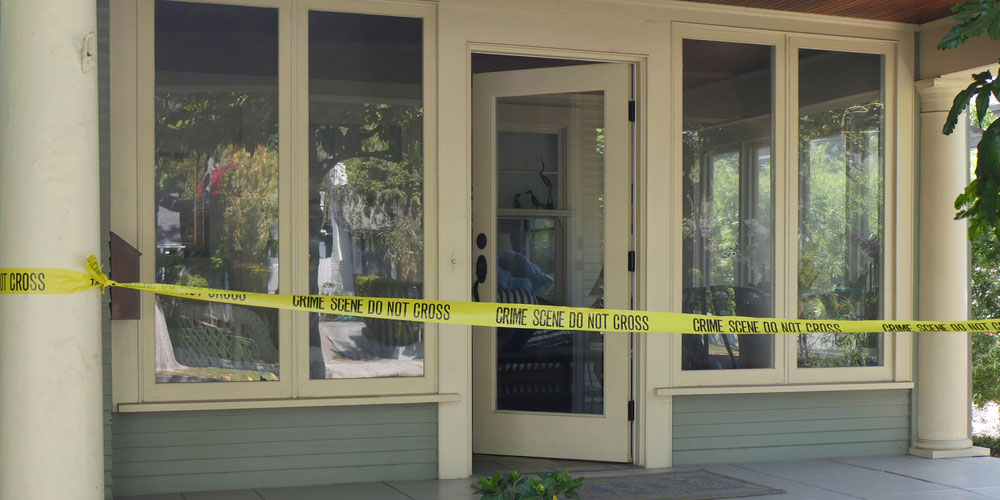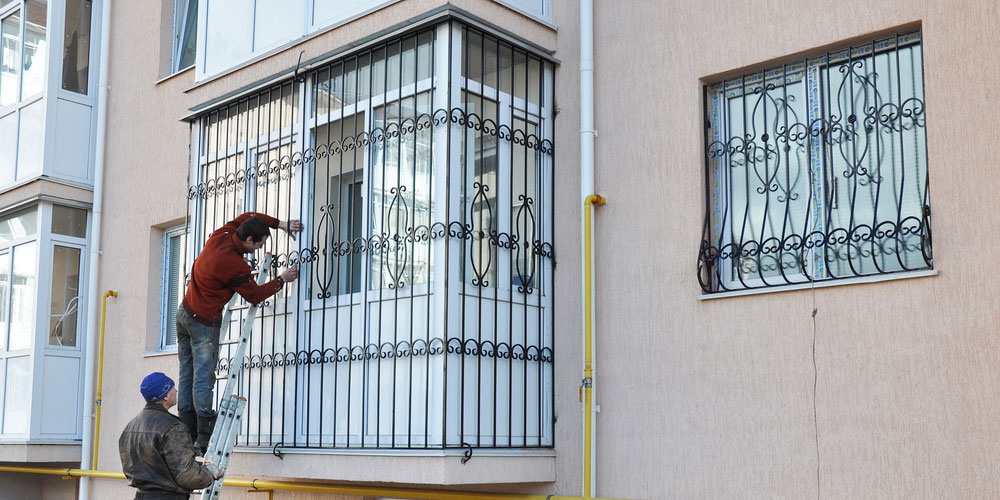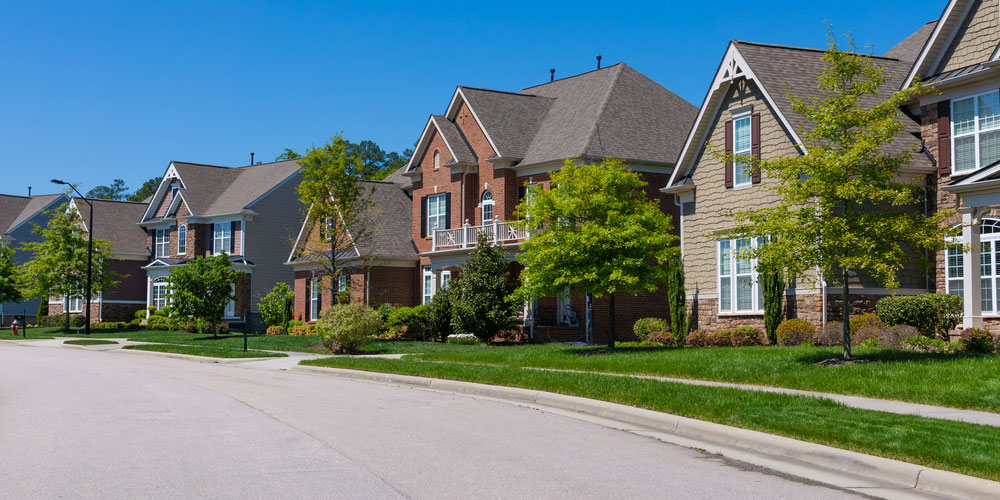Lock Blog
A resource for consumers, locksmiths, and security professionals
A resource for consumers, locksmiths, and security professionals

If the term home invasion fills you with some dread then you should consider it a good thing, it means, that at the very least, you have some self-awareness of the dangers you may face, and this self-awareness will end up impacting your safety in a good way. This article is meant to provide homeowners with information and tips that help prevent the likelihood of a home invasion occurring, as well as helping you respond appropriately should one happen.
It is easy for most people to confuse a home invasion with a home break-in or a burglary, mostly because they tend to occur in the same spaces. However, it should be noted that home invasions have a particular tinge of malice that is not associated with regular home break-ins or burglaries. This is not to say every home invasion turns violent, but there are many recorded cases in which violence has been the end result of a home invasion.
This also doesn’t mean that some of the more important home break-in statistics will not inform the way you address a home invasion. They should simply be treated as different things and different threats, even if they occasionally overlap. A home invasion is defined as the use of forcible entry to gain unauthorized access to a home.
The key difference between a home invasion and a home break-in is that not all break-ins and burglaries constitute the use forcible entry into an occupied property. However, home invasions are sometimes synonymous with doors being kicked in, door locks being broke and windows being smashed in, peppered in with the endangerment of homeowners who are present at the time. Each of the examples listed above can be prevented by improving the security of your front door, which we will dive into later on in this article.
Home invasions are much rarer than your run of the mill home robbery, and it is not always the case that the main driving force behind a home invasion is to steal an individual’s property. There are some home invasion cases that are fueled by the intention to harm another person, either through physical or sexual assault. In other instances, people are simply targeted because they might have suddenly achieved the notoriety that comes with instant success like winning the lottery.
Although home invasions are rare, the dangers they pose are no less serious, and they should still be treated accordingly. It is important to be aware of these dangers so that you take steps to actively avoid them or respond accordingly if you ever find yourself as a victim of a home invasion.
The dangers that homeowners face from home invasions should not be taken lightly, it should also be noted that the court of law handles home invasions much more harshly than burglaries, which might give homeowners some insight into the apparent dangers they face. This shows you just how different they can be in terms of scope, especially if they are dealt with differently by the law.
Some of the dangers posed by home invasions include loss and damage to property, the threat of physical harm, and the subsequent loss of the peace of mind that you experienced while being in your home. There are many well-documented cases of home invasion victims and survivors who no longer feel safe and secure in their own homes, all because they have endured something as arduous and taxing as a home invasion.
Home invasions, although rare, can happen either sporadically or as a result of a targeted effort. Similar to one of the many tricks that burglars use, home invaders who target a specific home or individual often stake out this person’s property to get a better idea of the best time for them to strike. Not only are your livelihood and sanity at stake, but also your privacy.
In order to make the information in this article as easily digestible as possible, the sections and tips on prevention and response have been split up so that they are more readily accessible. However, before we dive into the tips that will help you prevent a home invasion or respond to a home invasion, it is best to take a brief look at some of the tools that will help you when it comes to home invasions in general.
Keep in mind that most of these security measures will overlap between invasion and response. Take the time to read each section thoroughly, so that you leave no stone left unturned when it comes to the security and safety of your home, your property, and your family. Here is what you need to know for home invasion prevention:

The basis of any home invasion is quite simple actually. In a nutshell, a home invasion means that your home will be invaded. It may sound extremely redundant, but it’s true. Now, what is the simplest and most direct way to attempt to prevent your home from being invaded? The simplest way to prevent a home invasion is to take active steps to make your home impenetrable to all unauthorized parties who might attempt to gain access to it. It is rather unfortunate that most homeowners do not take advantage of these tips until after stories of home invasions hit a little too close to home, but we are just human after all.
To make your home impenetrable, homeowners need to assess every corner and square inch of their home and give themselves an honest accounting of any vulnerabilities that might be present in their home. It helps to pay close attention to any viable entry points that might give someone access to your home. This is where a full-on home security assessment comes in handy.
Homeowners will get the chance to pay close attention to the vulnerabilities of their windows, the vulnerabilities of their doors, as well as any other flaws that might otherwise go unnoticed. For instance, homeowners might not take the initiative to burglar-proof their windows, if they are not first made aware of some of its vulnerabilities. And fortifying some of these weak points is a key part of making your home impenetrable.
Essentially, homeowners should approach this process as if they are attempting to fortify their homes for the end of days, and this takes a lot of work, as well as self-critique. However, homeowners do not only have to focus on themselves. They should also focus on the kind of physical security threats that they are most likely to face because this will help them understand the way a home invade or a burglar will attempt to attack your home.
Another tip that will help you prevent a home invasion is to combine multiple security deterrents that allow you to effectively combat any threats that are thrown your way. Security deterrents are extremely vital to keeping unauthorized individuals away from your property and they should be employed effectively to that end. In many ways, the first point listed above will give you a good idea of the kind of security deterrents you can use to protect your home.
Using multiple security deterrents simply follows the school of thought that the best form of security is the one that exists in layers. A layered security mechanism makes will make it much harder for home invaders to victimize you and put you in a life-threatening position. The security buffers that you employ should be meant to seal any cracks that exist in your security. These kinds of cracks will become evident if you conduct a home security assessment as was suggested earlier.
Ideally, your security deterrents should be implemented in a way that reduces any of the ways in which a flaw in your security can be compromised by home invaders and used against you. Some common security deterrents include using surveillance cameras, installation of monitored alarm systems, and burglar proofing solutions that can be applied to both doors and windows.
When it comes to choosing security deterrents, homeowners should be mindful of the nature of the of the deterrent that they are using. Some security deterrents can be classified as active, and some can be classified as passive. For example, security cameras are a more passive type of security deterrent, which does not necessarily make them suited for protection purposes.

As was mentioned earlier, some home invasions are predetermined, which means that your home is, unfortunately, handpicked and targeted by home invaders. Until the crime occurs it is often unclear what the motive behind the home invasion is. The danger here is that it becomes exceedingly difficult for homeowners to prevent against something they might not see coming or a series of events they do not have any control over.
Who’s to say that your home isn’t being targeted at random, and if so what is the factor that makes your home stand out in comparison to other homes? These kinds of questions usually leave homeowners at a loss because there are a lot of unknowns involved in trying to figure some parts of this out. However, although there are relatively a lot of unknowns in this realm, homeowners still have a chance to thwart a home invasion before one occurs.
The key element here is to simply try and make your home more uninviting to home invaders. In theory, this concept is very similar to making your home unappealing to the regular neighborhood burglar. When it comes to making your home unappealing, there are few ways to go. It all boils down to making your home look like a challenging target to invade, as well as making it look as if there is nothing of monetary value to gain.
The latter will not be a viable solution if your home is being targeted for other reasons. Homeowners can focus on improving their perimeter security to reduce the odds of their home being targeted and compromised by home invaders. By implementing some form of perimeter security, you decrease the possibility of your home being targeted.
Now I know that this does not exactly sound like a tip that is geared towards preventing home invasions, but trust that by the time it is all explained. You will have a better idea of what I’m talking about when I say that you should always try to keep your home occupied. Some might contend that this puts you at more of a risk of being the victim of a home invasion, but this is not necessarily the case.
Keeping your home occupied does not mean that you have to freeze your life and put everything on pause as you stay at home for every waking hour of your day. All this means is that you should have some solutions in place that allow you to passively, or actively, monitor your home and keep an eye on it even though you aren’t there.
In situations such as this, homeowners can take advantage of solutions that range from surveillance cameras to the simple presence of a dog in your home, or even the installation of monitored security systems. Implementing measures such as this allows you to have some form of omnipresence in your home, even when you are not really there. Using security cameras with remote access capabilities will let you check in on your home even when you are away.
Now that we have looked at the ways to implement home invasion prevention, here is what you need to know to handle home invasion response:
It is important to understand home invasion scenarios can unfold in a myriad of ways, which means that there isn’t a singular solution that necessarily works across the board. Homeowners should think fast, but still calmly assess the particular situation they are in to understand the best way to approach it. Here are some tips for home invasion response:

Prevention and response are intrinsically linked. In many ways, the appropriate response tactic is, in and of itself, a preventative measure. Responding to the threat of a home invasion, or responding in the midst of an active home invasion, will directly determine the aftermath of the entire event, and it will correlate to your level of safety and well-being afterward.
The first tip that helps you respond appropriately to home invasions is knowing who you should reach out to. Knowing the best way to efficiently contact the authorities will come in handy and will help homeowners safely navigate the situation.
Response and prevention go hand in hand, and setting up the proper preventative barriers will give you much needed time to contact the authorities. Homeowners should treat response similar to prevention, in the sense that it helps to plan for this outcome before you are thrust into it.
Take the time to figure out where the authorities are located in your neighborhood and learn the best way to get in contact with them. Having this information handy helps you streamline the process of requesting emergency services to assist you in the event that your home in invaded.
In some cases, responding to a home invasion will involve having to engage with home invaders. Engaging with home invaders and intruders can either be a direct, or indirect process. Regardless of which type of process you are made to go with, the use of some handy self-defense tools will help keep you well armed and possibly protected until the proper authorities can arrive to aid you.
Examples of some of the more passive and indirect self-defense tools are mechanisms like alarm systems that serve to alert homeowners while simultaneously distracting home invaders, which temporarily gives the homeowner the upper hand. Some would not classify alarm systems as a self-defense tool, but in this particular scenario, I think there is a case to be made for it.
On the other hand, more active and direct tools consist of items like firearms, self-defense sprays, and tactical pens to name a few. These tools will initiate direct contact with home invaders and will help you protect yourself, overpower the home invaders, or buy yourself enough time to escape and get assistance. It is crucial to always be aware of the fact that weapons should only be used strictly for the purposes of self defense.

Basic survival skills are somewhat of a must if you hope to survive home invaders who are looking to harm you, your property, or your family. These skills span a rather wide range, and they can be implemented in different ways, to achieve different results. Some of the survival skills that come in handy in home invasion scenarios involve escape tactics, security tactics that keep you safe, and tricks that help you engage your invaders, or escape them if you are in a precarious situation.
For instance, being privy to the knowledge on how to escape from a kidnapping will help you escape restraints if you are bound and tied up by home invaders. This might seem like a whimsical survival tactic, and it might be easy to dismiss until you are faced with a scenario like this, and this survival skill is your only way out.
Furthermore, picking up a hobby like lockpicking might help you during a home invasion, especially if you are locked in a room, and the only way for you to escape is to circumvent a lock. Having a basic understanding of the way lockpicking works can potentially go a long way to save your life or the life of a family member.
In addition to this, getting self-defense training also goes a long way to increase your chances of survival. Self-defense training does not only come in handy as a personal protection deterrent in the era of terrorism, but it also comes in handy in your own home. These basic survival skills can also be bolstered by the inclusion of a safety plan and an escape plan that stipulates what needs to be done when issues like this arise.
Sometimes, the best way to respond to a home invasion is to keep yourself hidden and safely out of the way. This holds especially true if you or another member of your family is the primary target. In some ways, it is similar to how one might react in the event of a school shooting or other mass shooter settings that place their lives in danger. Not every scenario calls for you to meet invaders head-on, there are times where a more subtle approach is best.
Do not forget that prevention and response go hand in hand. Which means that prevention often lays the groundwork for the way you respond. This is certainly the case if you take a DIY panic room into consideration. Having the foresight to plan for an improvised panic room will help give you a secure location to keep yourself hidden should home invaders attack your home.
Dealing with a home invasion is not a light-hearted affair, and every aspect of it should be taken seriously so that you are taking active steps to protect your life and the lives of those around you. It is crucial for you to think on your feet, and to stick your safety plan or escape plan if you have one in place. Do not take any unnecessary risks, and do not do anything that further endangers your life or violently escalates the situation.
Prevention is always your best bet, but when your preventative measures fail, the way you respond will determine how you circumvent a home invasion. I hope the tips listed above inform you on prevention and response, and help you act accordingly if you are ever met with a situation as dire as a home invasion.
Category: Residential, Safety & Security